Growling is one of the many ways dogs communicate, and it is important for those who interact with them to understand what it means and the proper way to respond. You may be surprised at your innate ability to interpret growls.
In a study of human ability to understand dog growls, most people were able to correctly distinguish by audio between playful growls, aggressive growls from guarding food, and scary growls from dogs approached by strangers. This ability to understand growls was greater in people who interacted with dogs regularly.
Like communication with people, the sounds dogs make can express different meanings, emotions and desires. These are the meanings of the different growls and the ways in which they respond once understood.
Playful rant-“This is fun!”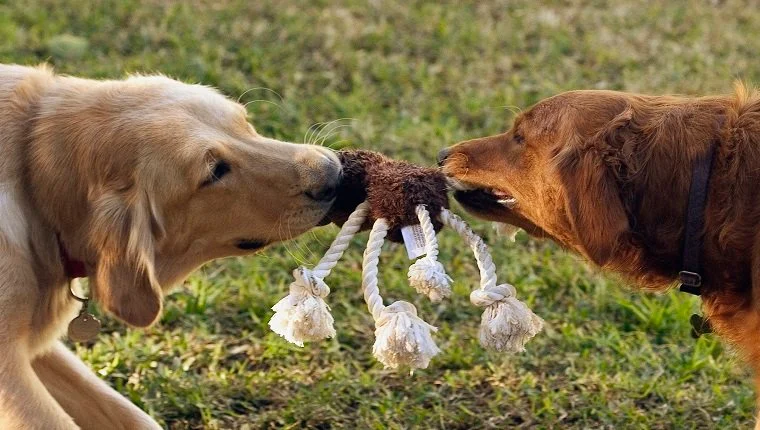 Dogs are very expressive in competition and their growling can sound intimidating, especially to inexperienced dog owners. Your puppy may growl at humans when playing tug-of-war or games involving housing, or at other dogs when wrestling or chasing.
Dogs are very expressive in competition and their growling can sound intimidating, especially to inexperienced dog owners. Your puppy may growl at humans when playing tug-of-war or games involving housing, or at other dogs when wrestling or chasing.
An energetic game is a good thing, and ranting is nothing to worry about. Pay attention to body language. If you are not familiar with dog owners, take a puppy socialization class or go to a dog park and observe how dogs interact. This will help you distinguish between a fun growl and a fight.
When a dog is growling, there is no need to worry. However, if you notice that the growling is getting louder, you may just want to stop for a while until everything calms down before continuing. Take a break. If your dog is playing with another dog, separate them for a few minutes.
When the energy runs out, you can restart the playtime. This will help you make sure that the game rant does not turn into a battle rant.
Deep growl-“It feels good, I want more!”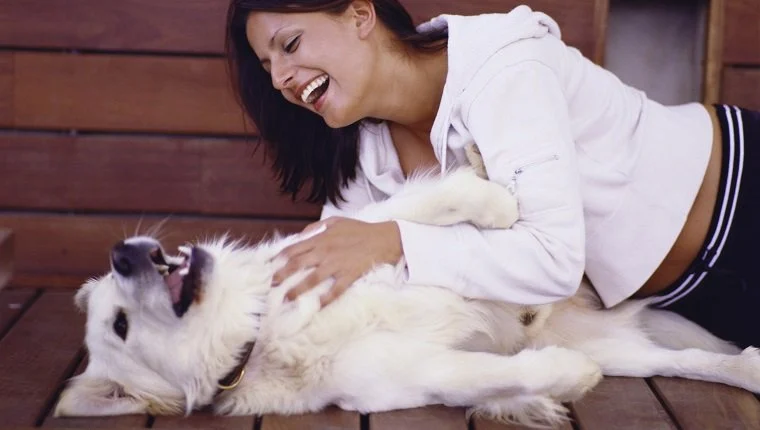 Some dogs growl to show love or contentment. For example, your puppy may give a low growl when you pet them. It sounds like the cat’s purr is louder.
Some dogs growl to show love or contentment. For example, your puppy may give a low growl when you pet them. It sounds like the cat’s purr is louder.
They can also growl to show that they want more affection. Body language can become loose and relaxed, even to the point of sounding like your dog is trying to say human words to you.
Overall, a deep rant is nothing to worry about. When people misinterpret it as aggression, it’s usually just a problem. If you know your dog is doing this, make sure anyone petting them knows it is normal and not to worry.
If your dog is growling and demanding too much affection, it may be an indication that they need more stimulation. You can provide your dog with a toy to play with, or try a walk and more exercise.
A tired dog is a happy dog, and their attention span may be reduced.
Frustrated growl-“Give me that!” Frustrated growling occurs when certain needs or desires cannot be met. This can mean that from the time your dog is hungry and growling, it can alert you that it is dinner time and your pup has found another dog they want to approach and play with.
Frustrated growling occurs when certain needs or desires cannot be met. This can mean that from the time your dog is hungry and growling, it can alert you that it is dinner time and your pup has found another dog they want to approach and play with.
This can often be misinterpreted as another type of growling. For example, if your dog is growling on a skateboard, it may be because they want to get close and investigate, or it may mean they are scared.
Knowing the differences can be difficult, depending on how well you know your dog. Do they like to play with other dogs? That way, they may get frustrated watching dogs they see but can’t get near growling.
This growling can be problematic. If your dog approaches another dog in a frustrated growl, he may be misinterpreted as aggressive and start a fight. They may even bite or nip due to overstimulation.
Alleviating this frustrating tension requires obedience training. You may need to find a professional trainer or educate yourself on how to reduce your dog’s reaction when they don’t get what they want right away.
Fearful roar – ‘Go away! Please leave me alone!’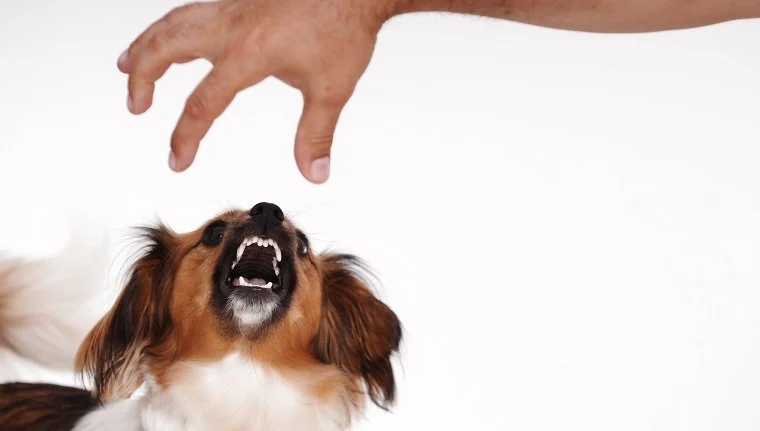 The dreaded growl occurs when your dog is surprised, wary or afraid of a perceived threat to themselves, their “package” (including human or animal companions), things like food and toys they crave or territory. What they say is: “Back off!”
The dreaded growl occurs when your dog is surprised, wary or afraid of a perceived threat to themselves, their “package” (including human or animal companions), things like food and toys they crave or territory. What they say is: “Back off!”
The purpose of the scary growl is to put distance between the dog and the threat. Scary dogs don’t want to fight, so they are trying to threaten the threat so that it goes away. This usually happens when a dog meets a stranger or another dog or animal present in its territory.
The fearful growl usually starts with a low voice, closed mouth, stiff body language, and no breathing. If the threat has not been eliminated, it can be there with teeth showing the growl. Fearful growling can be very worrisome and without intervention between the dog and the perceived threat, conflict is bound to occur.
The first step as a human is to identify the stressor that is causing the dog to growl. If possible, remove them. If you are restrained, move to an area where the threat is not visible.
Next, you may want to start behavior modification. If your dog is afraid of strangers, try some socialization. If your dog is food-protected, consider consulting a behaviorist.
Try to eliminate as many sources of anxiety from the dog’s life as possible and use training techniques to reduce the fear response.
Radical Roar – “I want to fight!” Aggressive growling is somewhat the opposite of fearful growling. If a fearful dog wants to put distance between itself and a threat, then an aggressive growl means a dog wants to reduce the distance and attack.
Aggressive growling is somewhat the opposite of fearful growling. If a fearful dog wants to put distance between itself and a threat, then an aggressive growl means a dog wants to reduce the distance and attack.
When aggressive growers are with other dogs, it may mean that they want to show dominance or fight. Some dogs have a high prey drive and want to hunt and kill them while attacking another animal.
Body language may be stiff, and you may see growling and bared teeth. This may be accompanied by piercing or bolting.
Aggressive snarling dogs are dangerous. They intend to fight and cause damage. If you are restrained, leave the area immediately. Get professional training advice.
Aggressive dogs can attack and cause injury, which can also lead to legal action and possibly euthanasia. Do not allow such attacks to continue so as not to risk the safety of the dog and others.
Battle Rant-“You’ll get it!”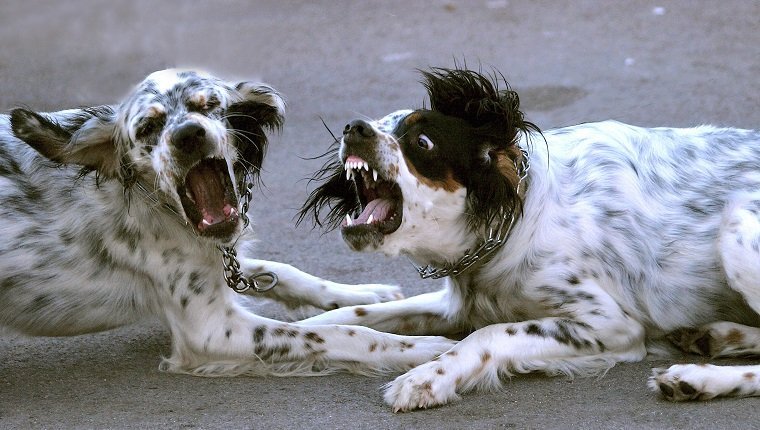 Combat growls are probably the most intimidating. It is important to know the difference between growling and fighting. If the game becomes too aggressive, or if the dog is not socialized and learns to show restraint in the game, it can lead to a fight.
Combat growls are probably the most intimidating. It is important to know the difference between growling and fighting. If the game becomes too aggressive, or if the dog is not socialized and learns to show restraint in the game, it can lead to a fight.
Knowing the difference between these rants will help you stop the situation before it escalates. A big part of this is understanding body language. Signs of playfulness include a play bow, head down with the hind end sticking up in the air, a relaxed mouth opening to reveal the abdomen, and a desire to keep going for more play.
It’s a sign of a fight, including high back hair, a closed mouth with curled lips, fixed ears, and one or both of the dogs trying to escape and not wanting to return.
The best way to avoid this situation is to stop the fight before it starts. Know the signs of an aggressive growl and leave the situation before the dog has a chance to attack. Know the signs of a playful growl and when it has gone too far. Take a break in the fight to calm the energy.
If the worst happens and your dog is involved in the fight, there are a variety of techniques that can be used to break it down, but you should have a good understanding of the dog’s growl so that you can prevent it from happening in the first place.
Roar of pain-“Ouch! I’m hurting!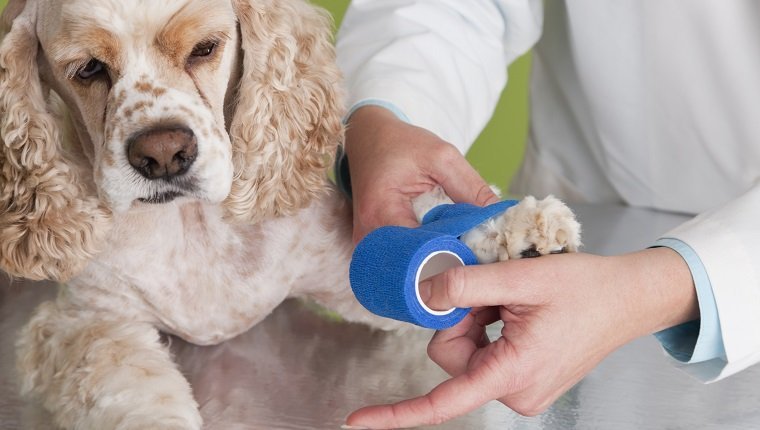 Dogs may growl when they are sick or injured. You may notice this, especially if you touch a part of their body or don’t want to touch them at all for fear of causing further injury.
Dogs may growl when they are sick or injured. You may notice this, especially if you touch a part of their body or don’t want to touch them at all for fear of causing further injury.
Growling can get worse when you or your veterinarian pokes and prods to get to the root of the pain, even accompanied by bites.
The best thing you can do is to know the signs of pain in your dog and see a veterinarian as soon as possible. They will be able to help find the cause and do something about it.
Trying to figure out what is wrong with you may lead to further fear and confusion for your dog, so it is best not to let this dog take matters into their own hands. Puppies are growling and telling you what is wrong, it is your job to do the responsible thing and help them out.
Which growl do you hear your dog barking? Do you feel like you know your dog’s growl well? Let us know in the comments below!

